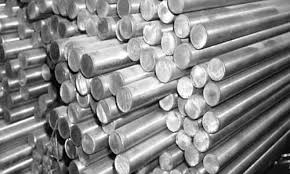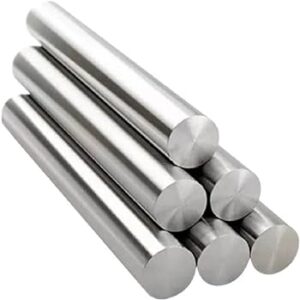Corrosion is a relentless adversary that relentlessly attacks metals, causing structural degradation, economic losses, and safety hazards. In the world of materials science, 316 stainless steel round bars shine as an exemplar of corrosion resistance. In this extensive exploration, we delve into the intricacies of what makes 316 stainless steel round bars impervious to corrosion. From their chemical composition to the formation of a protective shield, this article unravels the secrets behind their exceptional resistance to the corrosive forces of nature.
- Introduction
- The Marvelous Chemistry of 316 Stainless Steel
- Passivation: The Guardian Shield
- Impervious to Pitting and Crevice Corrosion
- Resistance to Chloride Attack
- Applications in Aggressive Environments
- FAQ
The Marvelous Chemistry of 316 Stainless Steel
To understand the corrosion resistance of 316 stainless steel round bars, we must first explore their chemical composition.
Chromium: The Guardian Element
- Chromium (Cr): Comprising 16-18% of the alloy, chromium plays a pivotal role. It reacts with oxygen in the atmosphere to form a thin, self-healing oxide layer on the surface of the steel. This oxide layer is the key to corrosion resistance.
- Nickel (Ni): At 10-14%, nickel enhances the steel’s resistance to corrosion and oxidation. It contributes to the stability of the oxide layer.
- Molybdenum (Mo): Present at 2-3%, molybdenum provides added resistance to pitting and crevice corrosion, especially in aggressive environments.
- Iron (Fe): Iron serves as the base element of stainless steel, forming the majority of its composition.
Passivation: The Guardian Shield
The remarkable corrosion resistance of 316 stainless steel round bars is attributed to a process called passivation.
Self-Healing Oxide Layer
- When exposed to oxygen, chromium in the steel reacts with it to form chromium oxide (Cr2O3) on the surface.
- This oxide layer is exceptionally thin, measuring only a few nanometers in thickness. Yet, it is incredibly effective at blocking the penetration of corrosive agents.
- If the surface is scratched or damaged, the oxide layer has the remarkable ability to heal itself when exposed to oxygen, preventing further corrosion.
Impervious to Pitting and Crevice Corrosion
Pitting and crevice corrosion are localized forms of corrosion that can be particularly destructive. Here’s how 316 stainless steel round bars thwart these threats:
Pitting Corrosion
- Pitting corrosion occurs when small pits or craters form on the metal’s surface due to aggressive agents.
- The molybdenum content in 316 stainless steel provides a robust defense against pitting corrosion. It forms a protective barrier that makes it difficult for pits to initiate and propagate.
Crevice Corrosion
- Crevice corrosion happens in confined spaces, such as gaps, crevices, or under gaskets, where stagnant solutions can accumulate.
- The inherent design of 316 stainless steel minimizes crevice corrosion risks due to its ability to maintain a stable passive layer.
Resistance to Chloride Attack
Chloride ions are notorious for their corrosive tendencies, particularly in marine and coastal environments. Yet, 316 stainless steel round bars remain resilient.
Chloride Resistance
- The molybdenum content in 316 stainless steel enhances its resistance to chloride attack, making it suitable for marine applications.
- Its ability to withstand chloride-induced pitting and crevice corrosion sets it apart from many other materials.
Applications in Aggressive Environments
Marine Industry
- 316 stainless steel is a cornerstone in the marine industry, used for boat fittings, shipbuilding, and offshore structures. Its corrosion resistance in saltwater is unmatched.
Chemical Processing
- In chemical processing, where exposure to corrosive substances is a daily ordeal, 316 stainless steel ensures the integrity of equipment. It resists acids, bases, and various chemicals.
Coastal Structures
- Coastal structures face a constant battle against saltwater corrosion. 316 stainless steel is a trusted ally in such environments, offering longevity and reliability.
Medical Devices
- Biocompatibility and resistance to body fluids make 316 stainless steel a prime choice for medical devices and surgical instruments.
Food and Beverage Industry
- In the food and beverage industry, where hygiene is paramount, 316 stainless steel’s non-reactive nature and resistance to corrosion are invaluable.
FAQ
1. Is 316 stainless steel completely immune to corrosion?
While 316 stainless steel is highly corrosion-resistant, it is not entirely immune to corrosion. In extremely aggressive environments, corrosion can still occur, but at a significantly slower rate compared to other materials.
2. Can 316 stainless steel rust?
Under certain conditions, such as prolonged exposure to highly corrosive solutions or mechanical damage to the oxide layer, 316 stainless steel can exhibit surface rust. However, this rust is typically superficial and does not penetrate deeply into the material.
3. How does 316 stainless steel compare to other corrosion-resistant alloys?
316 stainless steel is often compared to 304 stainless steel and other corrosion-resistant alloys. Its superior corrosion resistance, especially in chloride-rich environments, sets it apart. Additionally, the presence of molybdenum enhances its resistance to pitting and crevice corrosion, making it a preferred choice in aggressive settings.
4. Can 316 stainless steel be used in high-temperature applications?
Yes, 316 stainless steel can be used in high-temperature applications. It maintains its mechanical properties and corrosion resistance at elevated temperatures, making it suitable for various temperature conditions.
In conclusion, 316 stainless steel round bars owe their exceptional corrosion resistance to the clever chemistry of chromium and the self-healing oxide layer they form. This innate ability to fend off the relentless assault of corrosion makes them invaluable in industries where longevity and reliability are paramount. Whether in the unforgiving marine environment or the exacting standards of the medical field, 316 stainless steel round bars stand as guardians against the forces of corrosion, ensuring the longevity of structures and the safety of products.


